[JAVA] I tried using the cache function of Application Container Cloud Service
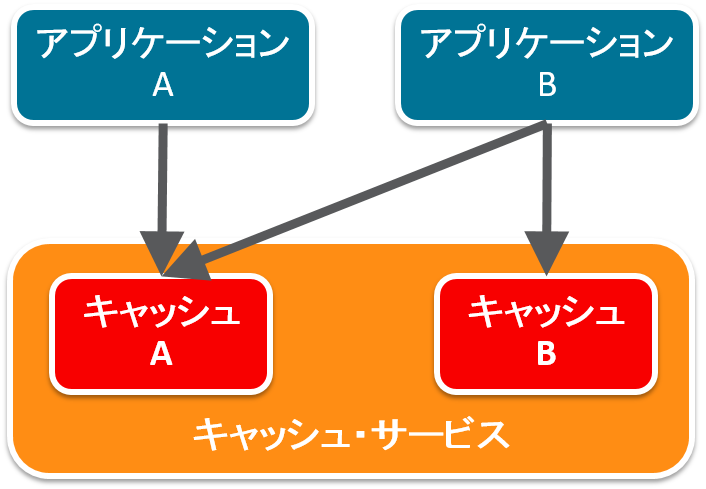
Oracle Application Container Cloud Service provides caching functionality. You can use this to cluster applications, substitute database access, and more.
Description
The caching capabilities of Oracle Application Container Cloud Service are easy to use. Creating a cache service is completed by simply setting the capacity used for the cache.
The following two methods are provided to access this cache function.
- REST API
- Java API
** REST API ** is a method to directly use the REST API provided by the cash service by using the REST Client API such as Jersey.
** Java API ** is a method to utilize the API for the cache service from within the application by using the library provided by Oracle. The following steps describe this Java API method.
It's an easy-to-use cash service, but it has the following usage rules:
--Multiple caches can be created in one cache service --One cache service can be used simultaneously from an application. (Multiple caches can be used in the cache service) --A cash service can be used by multiple cash services at the same time
function
--Cache data is replicated within cluster members ――Even if one cache is corrupted, it can be automatically recovered from another cache. --Data is saved even when the cash service is restarted --Scalable configuration
Premise
The following libraries are required to use the Java API for the cache service client application.
- cache-client-api-1.0.0.jar
It can be obtained by describing the following dependency by Maven:
- Artifact ID: cache-client-api
- Group ID: com.oracle.cloud.caching
<dependency>
<groupId>com.oracle.cloud.caching</groupId>
<artifactId>cache-client-api</artifactId>
<version>1.0.0</version>
</dependency>
how to use
The usage is explained below using the session retention method using HttpSession and Cache as an example.
For HttpSession
If you want to use HttpSession to hold the session, you typically write the code as follows:
Get session object and set data
HttpSession session = request.getSession(true);
session.setAttribute("KEY", "1");
Get session data
String value = (String) session.getAttribute("KEY");
For Cache (com.oracle.cloud.cache.basic.Cache)
1. Initialization
First, get the cache from the cache service, and if it does not exist, create the cache.
import com.oracle.cloud.cache.basic.Cache;
import com.oracle.cloud.cache.basic.RemoteSessionProvider;
import com.oracle.cloud.cache.basic.Session;
import com.oracle.cloud.cache.basic.options.Transport;
import com.oracle.cloud.cache.basic.options.ValueType;
String CACHE_HOST = System.getenv("CACHING_INTERNAL_CACHE_URL");
String CACHE_URL = "http://" + CACHE_HOST + ":8080/ccs/";
String CACHE_NAME = "sample";
Session cacheSession = new RemoteSessionProvider(CACHE_URL).createSession(Transport.rest());
Cache cache = cacheSession.getCache(CACHE_NAME, ValueType.of(String.class));
The URL of the cache service is obtained from an environment variable. The environment variable used is ** CACHING_INTERNAL_CACHE_URL **. Use System.getenv () to get the value.
String CACHE_HOST = System.getenv("CACHING_INTERNAL_CACHE_URL");
You can choose from two ways to access the cache:
- REST API
- gRPC
Use ** Transport ** to configure the settings when creating a Session object as shown below:
RemoteSessionProvider(CACHE_URL).createSession(Transport.rest());- Transport.rest(): REST API
- Transport.grpc(): GRPC API
2. Cache operation
Add / reference / update / delete data to cache as follows
- add to
cache.put("KEY", "VALUE")--Referencecache.get("KEY")--Updatecache.replace("KEY", "VALUE")- Delete
cache.remove("KEY")
Application Cache environment creation and application execution example
1. Creating a cash service
1.1. Application Cache Selection

Select ** Application Cache ** from the menu.
1.2. Creating a cash service instance

Click ** Create Instance **.
1.3. Cache configuration and capacity settings

--Basic: ** Only one ** A container for the cache will be created. --Recommended: ** 3 or more ** cache containers will be created.
1.4. Confirmation screen

1.5. Creating screen

1.6. Cash service creation completed

2. Deploy the sample application
2.1. Application selection

Select ** Application ** from the menu.
2.2. Deploy Application
Click ** Create Application **.
2.3. Runtime selection
Select ** Java SE **.
2.4. Selecting the application to deploy
Select the application you downloaded from the URL below :
In the choices at the bottom of the screen, select the created cash service.
Click ** Create **.
3. Operation using HttpSession
3.1. Access the sample application
Click the URL displayed on the dashboard screen. Applications accessed from this URL will use HttpSession to count up the number of accesses.
3.2. First access

3.3. Second access

3.4. Third access

3.5. Application restart

Click ** Restart ** from the menu.
3.6. Fourth access after restart

The session data is not persistent, so a reboot initializes the session. Therefore, it will be displayed again as ** First Access **.
4. Operation using Cache
4.1. First access

Access the context root as ** cache **.
-/ session: Servlet with HttpSession behavior -/ cache: Servlet with Cache operation
4.2. Second access

4.3. Third access

4.4. Application restart

4.5. Fourth access after restart

Since the access count information is stored as a cache on the cache service, it continues to count up even after restarting.
5. Clustering with cache
5.1. Deploy the same application with a different name

Rename and deploy the same application. Select the cash service as in the previous step.
5.2. Access the sample application
Access the application that runs the cache.
5.3. Confirmation of clustering operation using cache

We will share the number of accesses of each application and count up each.
GitHub https://github.com/shinyay/oracle-accs-cache-api
Summary
Before the introduction of the cache function, the only way to persist data was to store it in a database or as a file, so it is convenient to be able to use the cache function. Also, the cache function did not have a Java API when it first appeared, but I think that it is also convenient in terms of coding because the Java API is also provided.
Recommended Posts